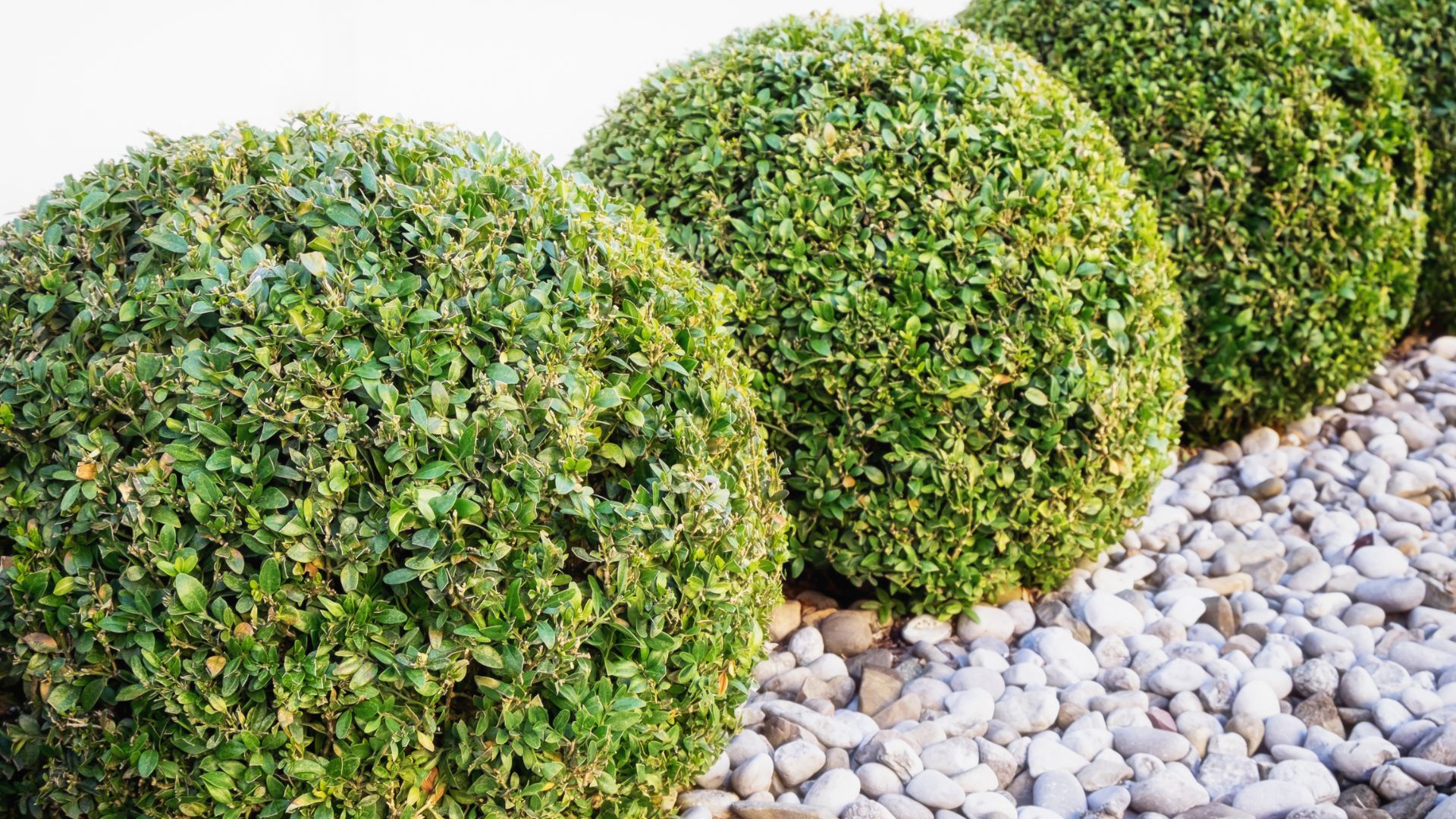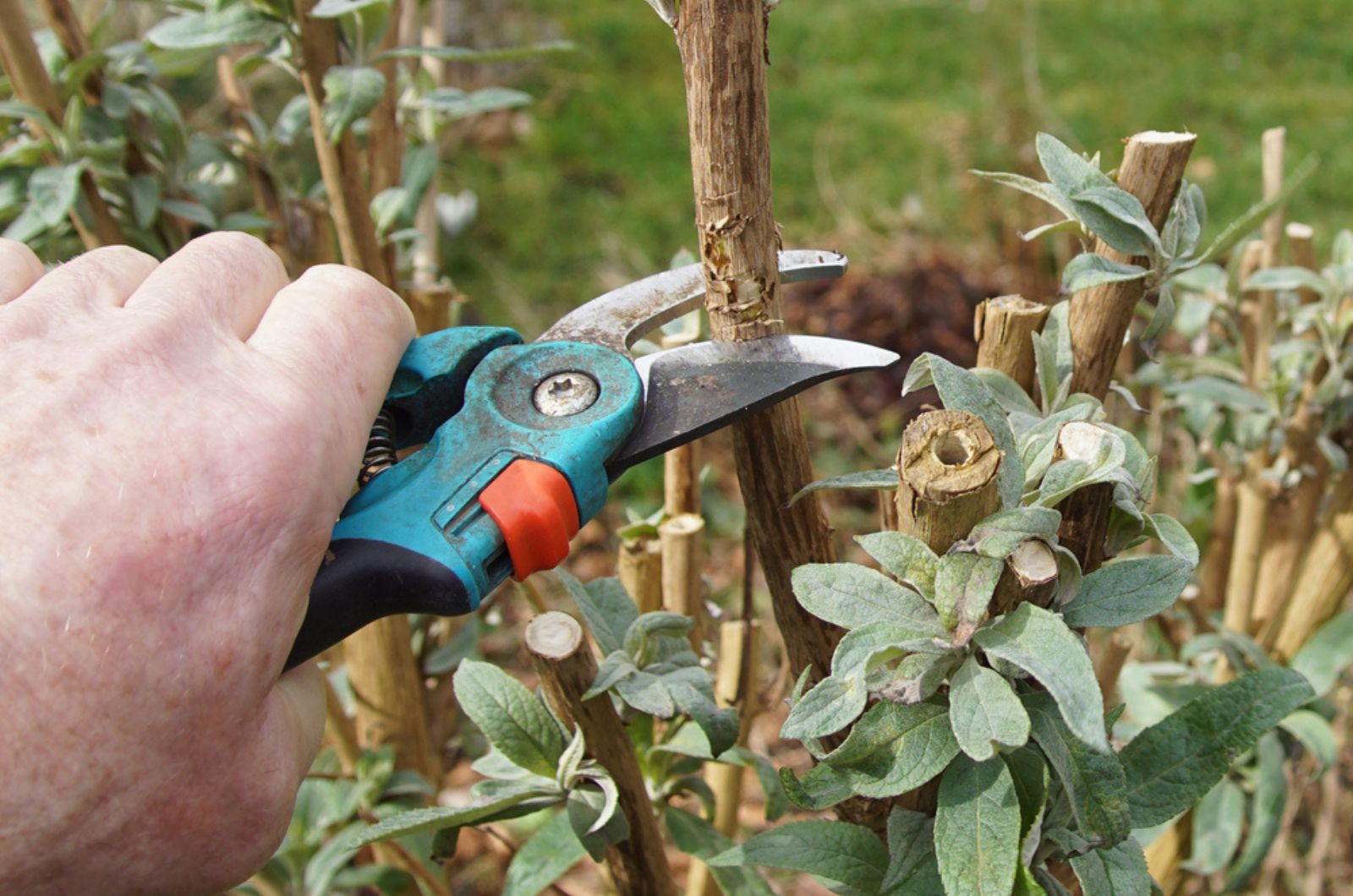Ahh, bushes! They’re pretty but they can sure be stubborn! You know the ones – they keep growing back no matter how many times you think you’ve finally gotten rid of them.
I remember one summer I spent what felt like every weekend dealing with this particularly pesky bush in my backyard. I thought I got rid of it entirely (I even celebrated!). But nope, the next spring, there it was, sprouting back like it owned the place.
So yeah, getting rid of bushes that keep growing back from their roots is something I am very familiar with. It might feel like a never-ending game, but luckily there’s a solution for everything!
I tried this cutting method and not once did any of them come back. What I would recommend you do is…
Start By Cutting All The Stems To The Ground
The one bush I mentioned in the introduction was the nandina bush (they started growing too close to my house, I felt like they were going to move in soon!).
These non-native invaders were 6 feet tall and definitely overstaying their welcome. So, I used my loppers and got to work, cutting the stems as close to the ground as I could. After that I was left with a few inches of stumps, and that’s when the real fun began.
All summer long, I used my pruning shears and a weed eater to cut down any new growth that dared to emerge. By the end of the season, after keeping them away from their precious sunlight, the root system finally gave up and the stumps crumbled away.
A few minutes of snipping each week and voilà: those nuisances were history. All I needed were some basic gardening tools and a bit of persistence (not too much).
Then, I turned my attention to a mock orange bush that, while lovely, was awkwardly standing in the middle of my yard. It was too big to move, so out came the small saw, and down it went. For the rest of the season, I simply mowed over any new growth. And it was gone by the end of summer!
Since then, I’ve got rid of everything from an aggressively spreading trumpet vine to an unwanted azalea with the same method (now, I recommend everyone uses it).
Since you like these bushy plants, here are 10 Captivating Winter-flowering Shrubs To Plant In Fall
And Don’t Give Up On The Stubborn Ones
When you are dealing with those extra stubborn plants like invasive honeysuckle, there might not be any other option but to use herbicides.
I always try to fix any issues with natural methods since chemical solutions can be harmful to the garden, but when nothing else helps, it’s time to bring out the big guns.
You must handle herbicides with extreme caution. Instead of just spraying them everywhere, you can try the “painting” method to ensure only the troublesome plants meet their demise (plus, it’ll make you feel like an artistI).
Get an envelope moistener (I use this one from Amazon), fill it with brush killer, and add a few drops of acrylic paint to mark your progress. You should try to cut each stem as close to the soil surface as possible, and then paint on the brush killer.
Although it might take a couple of tries, this method works very well, even on the toughest bushes!
You can do this anytime it’s above 40 degrees Fahrenheit, but it’s most effective in early fall when plants are preparing for winter and will draw the brush killer deep into their roots.
Remember, always follow the safety instructions on the herbicide label and don’t let pesky shrubs take over your garden!
This could be helpful: These Are The 7 Terrible Mistakes When Pruning Trees And Shrubs You Should Avoid At All Costs


